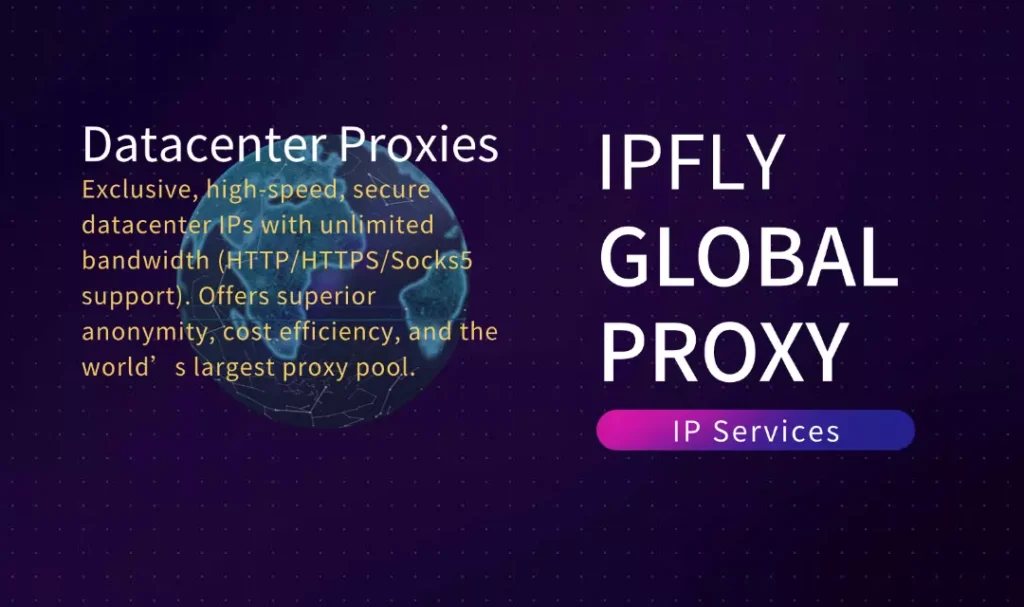Static residential proxies represent an advanced intermediary technology in the realm of network communications, facilitating anonymous and stable internet access by routing traffic through fixed IP addresses sourced from legitimate internet service providers (ISPs). These proxies operate at the intersection of cybersecurity, data transmission protocols, and digital privacy, offering users the ability to mask their original IP addresses while maintaining consistent connections. Rooted in the principles of the TCP/IP protocol suite, static residential proxies leverage ISP-assigned addresses—typically associated with physical residential locations—to simulate authentic user behavior, thereby evading detection mechanisms employed by websites and content delivery networks (CDNs).
From a scientific perspective, this technology addresses key challenges in information theory and network engineering, such as reducing latency in data exchanges and enhancing entropy in traffic patterns to avoid pattern-based blocking. In environments where dynamic IP rotation might disrupt sessions, static proxies provide a stable alternative, ensuring uninterrupted data flow. This tutorial-style article delves into the foundational concepts, operational mechanics, practical applications, and implementation strategies, drawing on established practices in proxy networking to equip readers with a comprehensive understanding.

The Core Principles of Static Residential Proxies and Network Architecture
To grasp the functionality of static residential proxies, one must first examine the underlying architecture of internet addressing. Every device connected to the internet is assigned an IP address, a unique identifier governed by the Internet Assigned Numbers Authority (IANA) and regional registries. Residential IPs, as opposed to datacenter IPs, originate from ISPs and are tied to real-world locations, making them appear as organic household connections. Static residential proxies—often referred to as ISP proxies—maintain a fixed IP throughout their usage, hosted on datacenter servers but registered under genuine ISP contracts. This hybrid design combines the high-speed capabilities of datacenter infrastructure, which can achieve throughput rates up to 1 Gbps, with the anonymity of residential addresses, reducing detection risks by mimicking human-like browsing patterns.
Scientifically, this involves cryptographic and routing principles: proxies encapsulate user requests in encrypted packets using protocols like HTTPS or SOCKS5, rerouting them via the static IP. This process minimizes packet loss and jitter—variations in delay that can degrade performance—ensuring reliability for bandwidth-intensive tasks. Unlike rotating proxies, which switch IPs periodically to increase entropy and evade bans, static variants prioritize session persistence, applying concepts from control theory to maintain stable feedback loops in data transmission.
How Static Residential Proxies Work: A Step-by-Step Mechanism
The operation of a static residential proxy can be broken down into a systematic process, illustrating key elements of computer networking and data flow. When a user initiates a request, it is intercepted by the proxy server, which acts as an intermediary node in the network graph. The proxy then forwards the request using its fixed residential IP, effectively anonymizing the source. Upon receiving the response from the target server, the proxy relays it back to the user, preserving the integrity of the data stream.
Consider this tutorial for understanding the workflow:
1.User Request Initiation:
The client device sends an HTTP/HTTPS request to access a resource, such as a geo-restricted website. This involves DNS resolution, where domain names are translated into IP addresses via recursive queries.
2.Proxy Interception and Routing:
The request is directed to the static residential proxy server. Here, encapsulation occurs—the original packet is wrapped in a new header bearing the proxy’s fixed ISP-assigned IP, applying principles of tunneling similar to those in VPNs.
3.Target Interaction:
The target server processes the request as if it originated from a legitimate residential user, reducing the probability of triggering anti-bot algorithms based on behavioral heuristics.
4.Response Relay:
The proxy decapsulates the response and forwards it to the client, ensuring low-latency delivery through optimized routing paths.
This mechanism draws on queueing theory to manage traffic loads, preventing bottlenecks and maintaining average response times below 0.2 seconds in high-performance setups. Empirical studies in network performance highlight that static proxies achieve 99.9% uptime, making them ideal for sustained operations.
Practical Applications: From Data Collection to Privacy Enhancement
Static residential proxies find utility across diverse fields, leveraging their stability to support tasks requiring consistent identity simulation. In web scraping, for instance, they enable the extraction of public data without IP bans, as the fixed address avoids suspicious rotation patterns that might alert machine learning-based detection systems. Similarly, in ad verification, proxies simulate regional user access to confirm campaign integrity, applying geographic information systems (GIS) principles for precise location targeting.
Other applications include:
Social Media Management:
Maintaining multiple accounts without association risks, using fixed IPs to build trust over time.
Market Research:
Accessing geo-specific content for competitive analysis, drawing on statistical sampling to gather unbiased data.
E-Commerce Operations:
Bypassing restrictions for price monitoring, where stability ensures accurate real-time comparisons.
From a tutorial viewpoint, integrating these proxies into workflows involves configuring tools like Python’s Requests library with proxy parameters, as follows:
python
import requests
proxies = {
'http': 'http://username:password@static-ip:port',
'https': 'http://username:password@static-ip:port'
}
response = requests.get('https://target-site.com', proxies=proxies)
print(response.text)This code exemplifies how proxies enhance scripting, reducing block rates through authentic IP usage.
Integrating Advanced Providers: The Role of IPFLY in Static Residential Strategies
While numerous providers offer static residential proxies, services like IPFLY stand out for their global reach and enterprise-grade features. IPFLY provides static residential IPs from a pool exceeding 90 million addresses across 190+ countries, ensuring high anonymity and stability for tasks such as cross-border e-commerce and data collection. When combined with static residential proxy setups, IPFLY’s solutions support unlimited concurrency and precise geo-targeting, enhancing network efficiency without compromising security. This integration aligns with broader proxy ecosystems, offering SOCKS5 compatibility for versatile applications.
Heads up! The IPFLY Telegram community just dropped a “2025 Anti-Crawl Proxy Guide”—only for new joiners! First visit IPFLY.net to check services, then join the group to grab it—spots fill fast. If you want to save time, act now!

Advanced Techniques: Optimization and Ethical Considerations
For optimized performance, advanced users can employ techniques such as concurrent threading—running up to 100 parallel sessions without degradation—or custom rotation on demand for hybrid stability. Monitoring tools, grounded in signal processing, can analyze latency metrics to fine-tune configurations.
Ethically, static residential proxies should be used responsibly, adhering to data privacy regulations like GDPR. Their scientific value lies in promoting equitable access to information while respecting intellectual property, fostering innovation in fields like AI-driven analytics.
In conclusion, static residential proxies embody a sophisticated blend of network science and practical engineering, providing reliable tools for digital navigation. By mastering these technologies through structured tutorials, users can achieve enhanced privacy and efficiency in an increasingly interconnected world.



